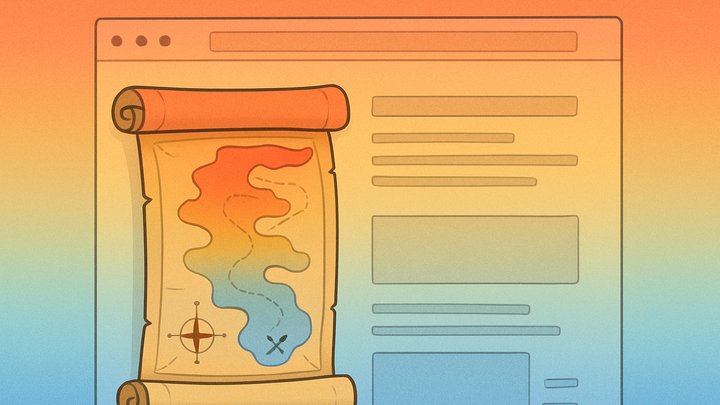Published on 2025-06-28T05:15:41Z
What Is a Scroll Map? Examples and Use Cases
A scroll map is a type of heatmap that visualizes how far users scroll on a webpage. It uses color-coded overlays to represent scroll depth, highlighting the percentage of visitors who reach each section. Scroll maps help identify drop-off points and gauge content engagement across your pages. They are essential for optimizing layout, design, and information hierarchy based on real user behavior.
Scroll map
Scroll maps visualize user scroll depth on webpages with color-coded heatmaps to reveal engagement and drop-off points.
Definition of Scroll Map
A scroll map is a type of heatmap that visualizes how far users scroll on a webpage. It uses color-coded overlays to represent scroll depth, highlighting the percentage of visitors who reach each section. Scroll maps help identify drop-off points and gauge content engagement across your pages. They are essential for optimizing layout, design, and information hierarchy based on real user behavior.
-
Visual representation
Colors range from warm (high engagement) to cool (low engagement) to show scroll depth.
-
Data aggregation
Scroll events are captured across sessions and aggregated to build the map.
Benefits of Using Scroll Maps
Scroll maps offer actionable insights into user engagement and content performance. They reveal how far visitors scroll, which sections engage users most, and where they lose interest. By understanding scroll behavior, teams can prioritize content placement, improve above-the-fold experience, and optimize call-to-action positions.
-
Content optimization
Identify which sections receive the most attention and adjust content accordingly.
-
Layout improvement
Spot design issues that cause early drop-offs and rearrange page elements.
-
Conversion rate enhancement
Ensure key elements like CTAs are placed where users are most likely to see them.
Implementing Scroll Maps with SaaS Tools
Popular analytics platforms like PlainSignal and Google Analytics 4 (GA4) support scroll tracking. Below are examples of how to set up scroll maps using these services.
-
PlainSignal setup
PlainSignal offers a cookie-free, lightweight analytics snippet for scroll tracking. Use the following in your
<head>:-
Example snippet
<link rel="preconnect" href="//eu.plainsignal.com/" crossorigin /> <script defer data-do="yourwebsitedomain.com" data-id="0GQV1xmtzQQ" data-api="//eu.plainsignal.com" src="//cdn.plainsignal.com/plainsignal-min.js"></script>
-
-
Google analytics 4 setup
In GA4, scroll tracking is part of Enhanced Measurement. To enable it, go to Admin → Data Streams → Web → Enhanced Measurement and toggle “Scrolls.” For manual event tracking, add:
-
Manual event tracking
gtag('event', 'scroll', { 'send_to': 'G-XXXXXXXXXX' });
-
Interpreting Scroll Map Data
Interpreting scroll maps involves identifying key engagement thresholds and drop-off points. Look for patterns where the color gradient shifts significantly—these are areas where users lose interest or encounter issues.
-
Above-the-fold insights
High engagement in the top 33% indicates effective headlines and visuals.
-
Mid-page drop-offs
A steep drop in the middle suggests content may be too dense or lack clear structure.
-
Bottom reachers
Few users reach the bottom; consider moving key information higher or simplifying the page.
Best Practices and Common Pitfalls
To get the most from scroll maps, combine them with other analytics tools and qualitative feedback. Beware of sampling biases and seasonal variances when interpreting data.
-
Combine with heatmaps and session recordings
Use click maps and session recordings alongside scroll maps for deeper insights.
-
Consider sample size
Ensure enough data is collected to avoid misleading patterns from small sample sizes.
-
Account for page variations
Different page lengths and layouts require separate scroll maps for accurate comparisons.
